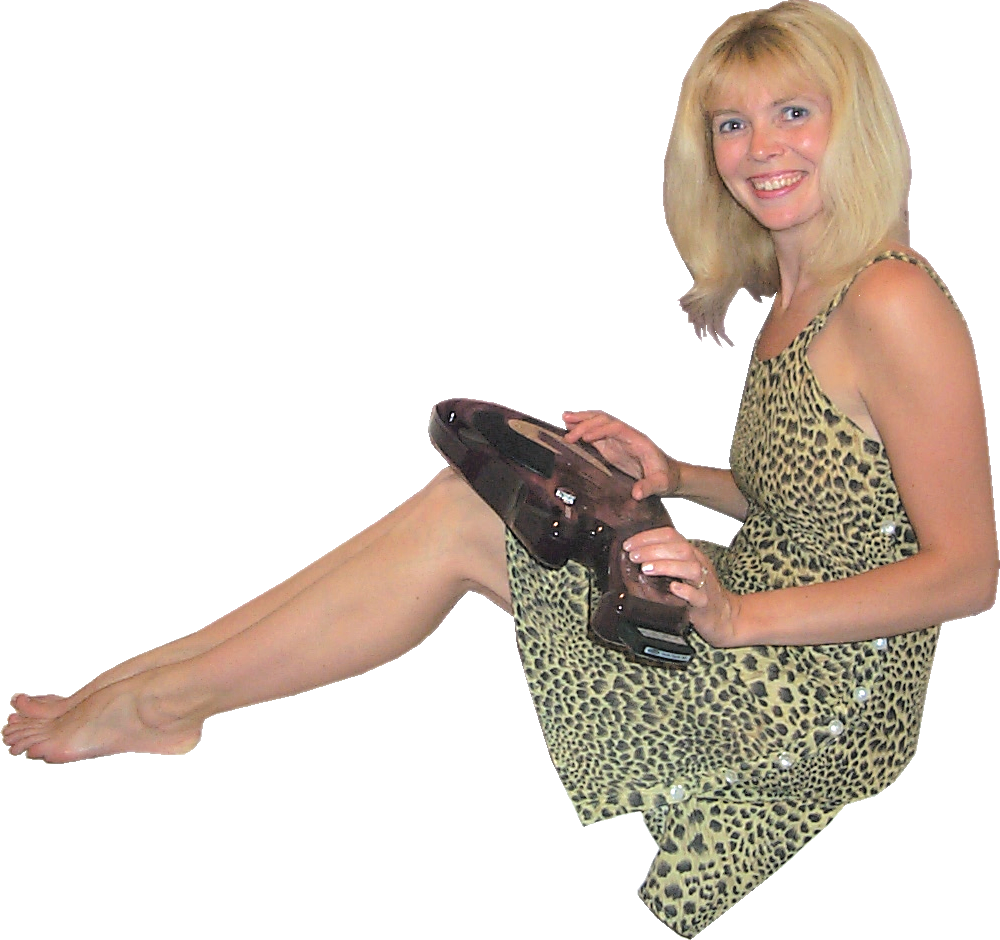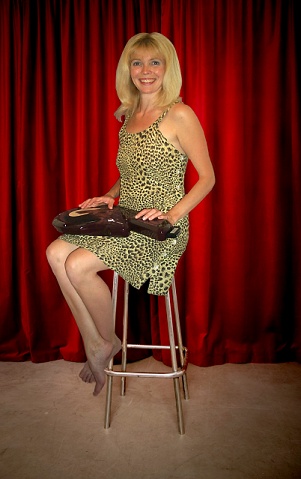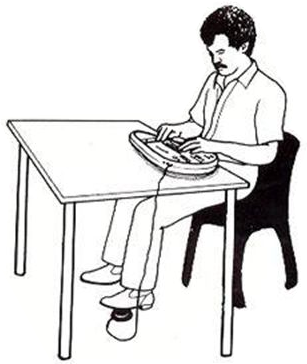Support & Frequently Asked Questions
 Most
popular support questions are answered in our F.A.Q. below, however
if you should require assistance there are a number of different ways
to contact us:
Most
popular support questions are answered in our F.A.Q. below, however
if you should require assistance there are a number of different ways
to contact us:
By Phone: You may call our office Mon-Friday 0900 - 1700 on 01908 511488
By email: support@suzukimusic.co.uk
By Post:Suzuki Europe Ltd
18 The Granary,
Lodge Farm Business Centre,
Wolverton Road, Castlethorpe,
Buckinghamshire,
MK19 7ES
Frequently Asked Questions:
 Can I use one of those generic A/C or D/C power
adapters with my QChord?
Can I use one of those generic A/C or D/C power
adapters with my QChord?
You should use only the specially designed power (A/C) and cigarette lighter (D/C) adapters, or risk possible damage to your QChord. This is because the QChord uses reverse polarity adapters; that is, the center pole is negative and the outer sleeve is positive. The correct adapters are available on our accessory page.
 Can I use the QChord A/C or D/C power adapter
with other appliances or instruments?
Can I use the QChord A/C or D/C power adapter
with other appliances or instruments?
This is not recommended, or you risk damage. See preceding question.
 Why does my QCard cartridge sound strange
sometimes?
Why does my QCard cartridge sound strange
sometimes?
 To avoid this, remember to power off the QChord, insert the
QCard, then power on.
To avoid this, remember to power off the QChord, insert the
QCard, then power on.
 Does the QChord come in different colors?
Does the QChord come in different colors?
No.
 My QRC-1 Rhythm QCard cartridge doesn't work!
My QRC-1 Rhythm QCard cartridge doesn't work!
This QCard Rhythm Cartridge is a "style" cartridge. You need to press the Stop/Play buttons simultaneously to switch off the on board rhythms, and select the rhythms from the cartridge instead. (Page 38, Instruction Manual)
 How is the QChord different from the Omnichord?
How is the QChord different from the Omnichord?
We have a special page devoted to just that subject, see our Omnichord page.
 What do I need to get started?
What do I need to get started?
Since the QChord is self-contained, all you must have to get started is the QChord itself and either an A/C adapter or batteries! It has built-in rhythms, and even a demonstration song built in. So, you can start right away, strumming and playing along.
But you'll soon find out how the accessories add to the convenience and fun. For instance, use the A/C adapter when a power source is nearby, to prolong battery life.
The QChord Songbooks show the chords to play for your favorite songs, while QChord automatically plays a built-in rhythm for you. Or, with a QCard Song Cartridge, your strumming and singing will be accompanied by what sounds like a full orchestra in the background tailored to the tune you're playing. The QCard Rhythm Cartridge adds thirty additional rhythms to those already built-in.
Take your QChord on the road in a handy molded carrying case, with space for accessories, and don't forget the DC adapter, so you can power it from your car or RV cigarette lighter outlet. The adjustable strap makes mobile playing easy.
The sound quality QChord delivers through its built-in mono speaker and bass port system is impressive. But you'll be truly amazed when you hear it in stereo.
You can practice in privacy with the stereo headphones. When you're ready, fill the room with concert hall sound by connecting to your stereo using the stereo connector cables.
 How many batteries does it take to run the
QChord?
How many batteries does it take to run the
QChord?
It takes 8 "C" cell batteries - We highly recommend that you use alkaline batteries (such as Duracell) for extended life.
 How do I connect QChord to stereo speakers?
How do I connect QChord to stereo speakers?
The sound quality QChord delivers through its built-in mono speaker and bass port system is impressive. But you'll be truly amazed when you hear it in stereo.
To connect to your own stereo system, you need a QChord Stereo Cable. Note that you are supposed to connect to your stereo amplifier, not directly to the stereo speakers.
The 1/4 inch stereo plug on one end of the stereo cable fits the QChord's PHONE LINE OUT (headphones) jack on the panel located on the side of the instrument at the right upper corner. The two RCA plugs on the other end should be plugged into a pair of Left and Right INPUT jacks on your stereo system; usually a pair labeled AUX (for auxiliary input) is available. Use your stereo system's input selector to select AUX (or whatever the pair you ended up using was marked; make sure they're identified as INPUT).
Be prepared to be blown away by the breathtaking quality of QChord's true stereo sound.
You can also connect QChord directly to self powered amplified
stereo speakers available in our QChord Store.
 How long do the batteries last?
How long do the batteries last?
The life of the batteries depends on the drain on the instrument - primarily, the volume level. When replacing batteries, we highly recommend alkaline batteries (such as Duracell) which will last a long time.
 My strumplate is starting to bubble up and fall
apart ! ! !
My strumplate is starting to bubble up and fall
apart ! ! !
All new QChords come with a thin protective plastic sheet on the strumplate. Please remove this plastic cover. You may also find a clear plastic cover on top of the display window, and on top of the keyboard overlay. These are to protect the instrument during manufacturing and packing process, and are meant to be removed.
 What is the life expectancy of the QChord
instrument itself?
What is the life expectancy of the QChord
instrument itself?
QChord, like most other electronics, can be expected to last a very long time, provided it is not abused (dropped, left in extreme heat, etc.). The QChord's predecessor was an instrument called the Omnichord first released in 1981. We still play that original OM27 instrument over thirty years later!
 What songs are on the QCard cartridges?
What songs are on the QCard cartridges?
Click here for details
 What songs are in the songbooks?
What songs are in the songbooks?
Go to the Songbook category in our QChord store. Click on the Songbook title of interest for a complete list of songs in that songbook. Also, if you're looking for a particular tune, try the Search feature.
 Where can I find the MIDI cables to connect the
QChord to the computer?
Where can I find the MIDI cables to connect the
QChord to the computer?
The QChord has MIDI in and MIDI out ports. Please refer to the instruction manual about how MIDI works, and how you can use the QChord MIDI capabilities.
To connect the QChord to the computer, you need to have a cable. To do some editing, you need MIDI software. There are many MIDI software packages on the market. Software and cables are available from electronics and software stores.
 Which MIDI channels are used on the Qchord?
Which MIDI channels are used on the Qchord?
2: keyboard
mode
3: Accompaniment 1 (chord)
4: Accompaniment 2 (chord)
5: Accompaniment 3
6: Accompaniment 4
7: Accompaniment 5
8: Accompaniment 6
9: Bass
10: Rhythm
14: Strum Plate (primary)
15: Strum Plate
16: Strum Plate
We're here to support you! Click over to our Support Page for all the details.
 How should I hold the Qchord when I play?
How should I hold the Qchord when I play?
 There
is no one answer as we have seen the Qchord played in many different
ways, When practicing, it is beneficial to sit at a table or desk.
The NHS recommends:
There
is no one answer as we have seen the Qchord played in many different
ways, When practicing, it is beneficial to sit at a table or desk.
The NHS recommends:
"Avoid back pain by adjusting your chair so that your lower back is properly supported. A correctly adjusted chair will reduce the strain on your back. Get one that is easily adjustable so that you can change the height, back position and tilt. Have your knees level with your hips. You may need a footrest for this.
 Adjust
your chair height so that you can use the Qchord with your wrists
and forearms straight and level with the floor. This can help
prevent repetitive strain injuries. Your elbows should be by the
side of your body so that the arm forms an L-shape at the elbow
joint.
Adjust
your chair height so that you can use the Qchord with your wrists
and forearms straight and level with the floor. This can help
prevent repetitive strain injuries. Your elbows should be by the
side of your body so that the arm forms an L-shape at the elbow
joint.
Your feet should be flat on the floor. If they’re not, use a footrest, which lets you rest your feet at a level that’s comfortable. Don't cross your legs, as this can cause posture-related problems."
When performing, many play the Q-chord resting it on their lap (see photo). However it is also possible to hold the Qchord similar to an Autoharp. Some artists prefer to stand, in which case a strap is available, alternatively you may wish to place the Qchord on a sturdy music rest.
 How do I know the what tempo is in BPM?
How do I know the what tempo is in BPM?
The Qchord LCD display does not show the current tempo, however as a rough guide you may use this chart:
![]() 62 bpm
62 bpm
![]() 68 bpm
68 bpm
![]() 76 bpm
76 bpm
![]() 84 bpm
84 bpm
![]() 94 bpm
94 bpm
![]() 108 bpm
108 bpm
![]() 126 bpm
126 bpm
![]() 150bpm
150bpm
![]() 188 bpm
188 bpm
![]() 250bpm
250bpm
ATTENTION Important Safety Notice
Batteries
The Q-chord has been designed as a live performance instrument, and so we felt that the ‘power off’ facility usually associated with battery powered items can be frustrating at times and has not been built into the design of the instrument. Whilst this will give you uninterrupted use of the Q-chord during a live performance, it does have one drawback: Because of the high power of the instrument, current drain is heavy and cheaper batteries will wear out in a matter of hours. Although unlikely, it is even possible that leakage may occur with some lower grade batteries if they begin to overheat. Although we may supply batteries with the unit, these are simply to get you started with your new Q-chord and should not be used for long periods of time. If you intend to use the instrument with batteries then you should purchase heavier duty units. We always recommend using the AC/DC adapter available from your Q-chord agent or Suzuki Europe. Ltd
! ALWAYS TURN THE INSTRUMENT OFF WHEN NOT IN USE !
! ALWAYS REMOVE THE BATTERIES WHEN NOT IN USE !
Using the correct mains adapter.
Use only recommended AC/DC adapter (available from your Q-chord agent or Suzuki Europe. Ltd). This should be a regulated negative polarity. Do not use cheaper low amp multi adapters, these are prone to overheating or burn out. It is always advisable to remove AC/DC mains adapters from the supply when not in use. If you are in doubt always check with your Q-Chord supplier or contact us
